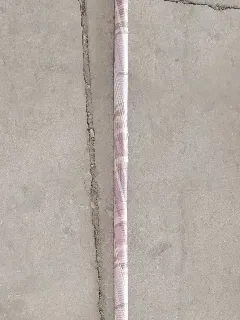loading...
- No. 9, Xingyuan South Street, Dongwaihuan Road, Zaoqiang County, Hengshui, Hebei, China
- admin@zjcomposites.com
- +86 15097380338
- Welcome to visit our website!
fiber water tank price
Understanding Fiber Water Tanks Price, Advantages, and Value
In recent years, the demand for innovative and durable water storage solutions has led to the increasing popularity of fiber water tanks. These tanks are made from high-quality fiber-reinforced materials, offering several advantages over traditional storage options such as concrete and metal tanks. However, as with any investment, the price of fiber water tanks is often a significant consideration for consumers. In this article, we will explore the pricing of fiber water tanks, their benefits, and what factors influence their cost.
What is a Fiber Water Tank?
Fiber water tanks, also known as FRP (Fiber Reinforced Plastic) tanks, are constructed using a combination of fiber glass and resin. This composite material offers superior strength, flexibility, and resistance to corrosion and weather damage. As a result, fiber water tanks have become a preferred choice for both residential and commercial applications, where reliability and longevity are critical.
Price Range of Fiber Water Tanks
The price of fiber water tanks can vary significantly based on several factors, including size, design, and brand. Generally, consumers can expect to pay anywhere from a few hundred to several thousand dollars for a fiber water tank. Smaller tanks (around 500 liters) might cost between $300 and $800, while larger tanks (ranging from 5,000 to 10,000 liters or more) can go up to $2,500 or beyond. Custom-designed tanks or those with additional features, such as specialized coatings or filtration systems, can further elevate the price.
Factors Influencing the Cost
1. Size The size of the tank is the most apparent determinant of its price. Larger tanks require more material and manufacturing effort, which increases the overall cost. Before purchasing, it is essential to evaluate your water storage needs carefully to choose the right size.
2. Quality of Material The quality of fiberglass and resin used in the construction of the tank can also impact its price. Higher-quality materials tend to be more expensive, but they provide better durability, resistance to UV rays, and longer-lasting performance.
3. Manufacturing Process Advanced manufacturing techniques can drive up costs. Tanks made with innovative, streamlined processes may have a higher upfront price but can lead to savings in maintenance and replacement costs over time.
fiber water tank price

4. Custom Features Features such as built-in filtration systems, insulation, or enhanced leak-proof designs can add to the expense. While these features may increase the initial investment, they often result in a higher value and lower operational costs in the long run.
5. Brand Reputation Established brands with a strong reputation for quality and customer service may charge more for their products. However, investing in a reputable brand often leads to greater peace of mind and better after-sales support.
Benefits of Fiber Water Tanks
Investing in a fiber water tank comes with numerous advantages
- Durability Fiber water tanks are resistant to rust, corrosion, and extreme weather conditions, making them suitable for various environments and applications.
- Lightweight and Portable Compared to concrete tanks, fiber tanks are significantly lighter, allowing for easier transportation and installation.
- Low Maintenance The non-corrosive nature of fiberglass requires less maintenance, translating to long-term savings for the owner.
- Eco-Friendly Options Many fiber water tanks are made from recyclable materials, appealing to environmentally conscious consumers.
Conclusion
While the initial price of fiber water tanks can be higher than traditional options, the long-term benefits often justify the investment. By understanding the factors that influence the cost and weighing them against the advantages these tanks offer, consumers can make informed decisions that meet their water storage needs effectively. Investing in a fiber water tank not only provides reliable water storage but also contributes to sustainability and environmental protection.
-
The Rise of FRP Profiles: Strong, Lightweight, and Built to LastNewsJul.14,2025
-
SMC Panel Tanks: A Modern Water Storage Solution for All EnvironmentsNewsJul.14,2025
-
GRP Grating: A Modern Solution for Safe and Durable Access SystemsNewsJul.14,2025
-
Galvanized Steel Water Tanks: Durable, Reliable, and Ready for UseNewsJul.14,2025
-
FRP Mini Mesh Grating: The Safer, Smarter Flooring SolutionNewsJul.14,2025
-
Exploring FRP Vessels: Durable Solutions for Modern Fluid HandlingNewsJul.14,2025
-
GRP Structures: The Future of Lightweight, High-Performance EngineeringNewsJun.20,2025
